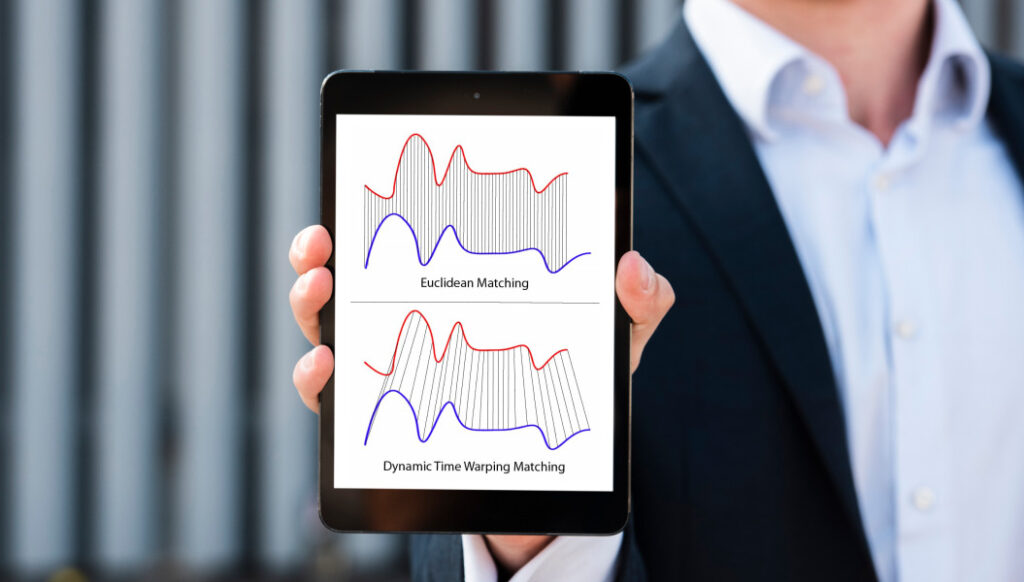Dynamic Time Warping – What Is It, Importance, Applications, And More
Dynamic time warping is a way of comparing the similarity or distance between two sequences of time or arrays of different lengths. It is an algorithm. With the help of this algorithm, you can do many-to-one comparisons to determine the alignment that works best. As a result, you will be able to exploit temporal distortions between the time sequences. Actually, dynamic time warping was designed for automatic speech recognition.
In this article, you will learn about this technique and how it works. You will also learn the importance of this system, as well as its applications in the real world and businesses. Furthermore, we will also show you how you can plan an effective marketing strategy using this technology. Hence, to learn more, read on through to the end of the article.
What Is Dynamic Time Warping?

According to an article on Medium.com,
“Dynamic Time Warping is an algorithm used for measuring the similarity between two temporal time series sequences. They can have variable speeds. It computes the distance from the matching similar elements between two series. It is used in dynamic programming to find the optimal path.”
In some cases, temporal sequences fail to sync up with each other perfectly. This is where Time-scale warping helps to calculate the optimal matching between the two temporal sequences. With the help of it, you can compare time series data dynamically, which results from various natural and man-made time-series events that occur worldwide.
Actually, dynamic time warping finds its application in the comparison of distinct speech patterns. However, nowadays, dynamic time warping has a lot of applications in various other places. These include financial markets, speech recognition, data mining, and many more. In the world of data mining, the application of this algorithm is the highest. Here, analysts measure the distance between two-time series.
For example, if you want to compare and find similarities between how you and your friend walk, dynamic time warping can help. It will match your speed and your friend’s speed. It also has a lot of applications in speech recognition, shape matching, signature recognition, and more.
Application And Importance Of Dynamic Time Warping
According to DataBricks.com,
“One of the most salient uses of dynamic time warping is in speech recognition – determining whether one phrase matches another, even if it the phrase is spoken faster or slower than its comparison. You can imagine that this comes in handy to identify the “wake words” used to activate your Google Home or Amazon Alexa device – even if your speech is slow because you haven’t yet had your daily cup(s) of coffee.”
Nowadays, this algorithm finds its applications across a variety of domains. Once you get a good understanding of this algorithm, you will also understand its daily-life applications, as well as future applications.
One of the major applications of dynamic time warping is financial markets. Here, many data analysts compare stock trading over time frames that are similar in nature. It also works in those cases where the time frames do not perfectly match. Let’s say you want to compare the monthly trading data of January (31 days) and February (28 days); you can use this algorithm.
Another cool application of dynamic time warping is in wearable trackers. It can calculate the speed of the walker/ runner along with the number of steps. This works despite variable speeds.
Data scientists, data analysts, or anyone who works with time series data are familiar with this technique.
Application Of Dynamic Time Warping In Creating Marketing Strategy
BuiltIn.com states –
“DTW is an algorithm that can help you find an optimal alignment between two sequences and is a useful distance metric to have in your toolbox. This technique is useful when you are working with two non-linear sequences, particularly if one sequence is a non-linear stretched or shrunk version of the other.”
If a business wants to run a marketing campaign for a period of time, then it can use Path-based alignment to check which market meets the demand of an ideal market. The business chooses a good market where it already operates well and terms it an ideal market. The market needs to produce highly successful output that involves incremental leads.
The business now plans to run the same campaign in new markets since it wants to grow and bring better results. Hence, the business looks to find a market that they can identify as an ideal market for the business. This will also enable them to determine the cost of stretching the marketing campaign over a period.
Hence, dynamic time warping offers an approach to businesses to help them identify which market is an ideal market for businesses. As a result, this marketing campaign can bring the same results by the end of the year.
The company finds the lowest distance of the ideal market with the dynamic time-warping approach. They then use this number as the ideal value. Among all the new markets where the business wants its marketing campaigns, the one with the lowest Piecewise linear alignment distance is chosen as the one where the business will run its marketing campaign.
What Is The Disadvantage Of Dynamic Time Warping?
Although dynamic time warping is simple and efficient, it can also be elusive at times. The time complexity factor is one of the major disadvantages of Graphical Time Warping. This happens mostly with large datasets with lengthy sequences. Hence, it gets difficult to train the sequences faster. The algorithm needs necessary tweaks from time to time to speed up.
Wrapping Up
You can see from this article the huge applications of dynamic time warping. It finds applications in finance, data mining, speech recognition, and more. Data scientists find it helpful to work with time series data. It is a programming algorithm which breaks the problem into various subproblems. After that, it stores the results and later uses those results when it is required. Hence, there is no requirement for recomputation.
Do you have more information to offer? Share your ideas and opinions with us in the comments section below.
For More Busienss Related Articles Click Below!!



